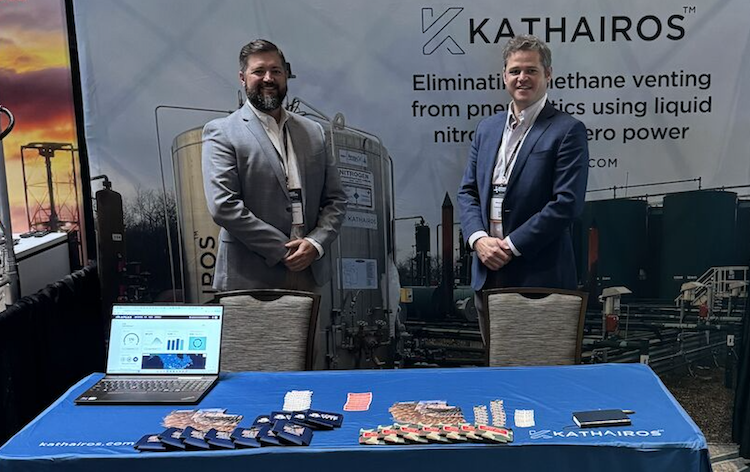
Kathairos has emerged as the leading North American solution for methane elimination from pneumatics, with more than 2,400 systems in operation across North America and over 70 major oil and gas producer partners.
In this post
Overview
In December 2023, the Government of Canada released draft methane regulations aimed at amending the current framework under the Canadian Environmental Protection Act, 1999. These proposed regulations target methane and volatile organic compounds (VOCs) in the upstream oil and gas sector. Key updates include more stringent definitions, enhanced requirements for venting and flaring, and comprehensive mandates for methane monitoring, reporting, and repair protocols.
Definitions and Regulatory Scope
The draft regulations refine the scope and definitions of terms such as "completion," "pneumatic controller," and "pneumatic pump," ensuring clarity and precision in regulatory compliance. The scope specifically targets onshore upstream oil and gas facilities, categorizing them into Type 1 and Type 2 based on equipment presence and facility size.
Emission Control Requirements
A significant tightening of emission controls includes a strict prohibition on venting hydrocarbon gases from facilities, except under certain conditions like maintenance or emergencies to mitigate health or safety risks. Pneumatic devices, critical in controlling gas flow and pressure, are now required to either connect to gas conservation systems, be destroyed, or replaced with non-emitting alternatives like Kathairos' nitrogen systems, offering an effective solution for mitigating Canadian methane emissions.
Continuous Monitoring and Inspections
The draft emphasizes continuous monitoring with specific requirements for sensor placement and calibration to ensure accurate emission detection. Facilities are mandated to conduct regular and detailed inspections for fugitive emissions, adhering to precise methodologies for calibration and operation, and staff training.
Implementation Timelines
Implementation is staggered: facilities operational before January 1, 2027, will face new requirements if their gas production in 2027 exceeds previous years. New facilities starting operations on or after January 1, 2027, must comply from the onset. Phased implementation dates are set for January 1, 2027, and January 1, 2030, allowing time for compliance preparation.
Conclusion
Canada’s draft methane regulations represent a robust approach to curtailing emissions in the upstream oil and gas sector. The detailed measures for monitoring, inspection, venting controls, and reporting are designed to ensure rigorous compliance and enhanced environmental protection. The final regulations are expected to be published in the Canada Gazette by late 2024.
Key Highlights
- Focus on Methane and VOCs: Targets upstream oil and gas sector emissions under updated legislative definitions.
- Venting Prohibitions: Introduces strict controls with limited exceptions for health and safety.
- Pneumatic Device Requirements: Mandates connection to conservation systems or replacement with non-emitting alternatives.
- Continuous Monitoring: Specifies requirements for emission detection systems and inspection protocols.
- Staggered Implementation: Sets deadlines based on facility operation start dates and production volumes, with key dates in 2027 and 2030.
- Preparation for Compliance: Allows a transition period for facilities to adapt to new standards, ensuring environmental goals are met without disrupting operations.

.png)

.png)